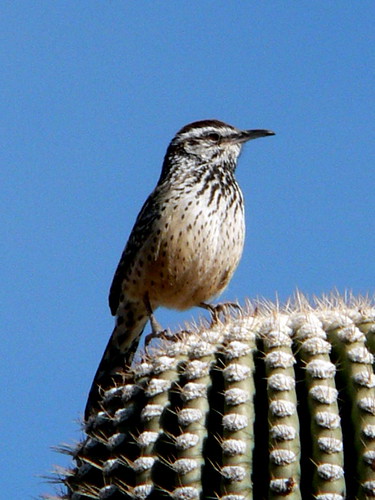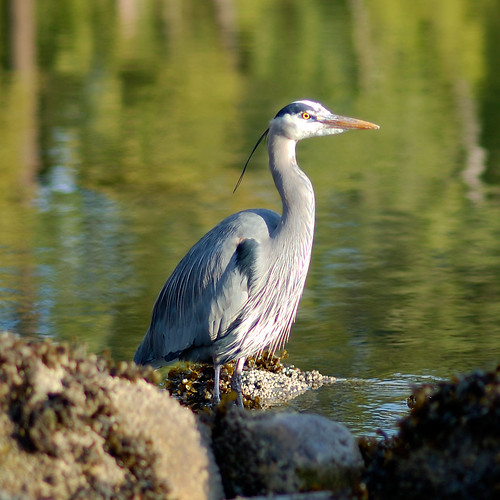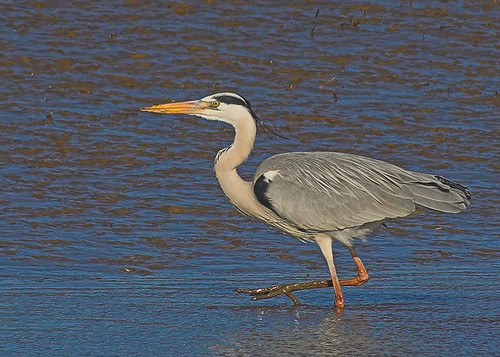I was looking back at old PFFA threads yesterday, and there was an argument about religion, evolution and so on during which someone asserted that “there are no verifiable fossil records of transitions from one species to another.” This morning I feel inclined to make a point which I don’t think is always appreciated by people who have never had to deal with issues of taxonomy; which is that, quite apart from the fossil record, transitional species are all around us.
I should probably start by establishing what a species is. A canonical species is a population of animals that can interbreed freely with each other and only with each other. In evolutionary terms, one species becomes two at the moment when the populations diverge so much that the split becomes irreversible. Because evolution works by a process of gradual changes, there will always be an ambiguous period when it is unclear whether that split has occured.
The obvious mechanism for a split happening is that two geographically separate populations develop in different directions. On the local level, the vast majority of species are easily separable from each other, but on the broader view, ambiguities about species status are almost the norm.
Let’s talk about wrens. To Europeans, ‘the’ wren is a familiar bird; tiny, loud-voiced, with a place in folklore and poetry. Most don’t realise that wrens are actually a New World family. All over the Americas there are dozens of species of wren, including some really quite large species:

Cactus Wren, originally uploaded by Bournemouth Pilot.
But at some point, one species, Troglodytes troglodytes, made it across the Atlantic or the Baring Straits and spread all across Eurasia. The particular species is still found in North America, where it’s known as the Winter Wren. It probably came across fairly recently, in biological terms, because it’s still similar enough across its range to be classified as a single species, and there are very very few species of small, non-migratory birds which are native to both North America and Eurasia. Nonetheless, there’s enough local variation – in colour, size, proportion – that it is classified into no fewer than 46 sub-species. These are two of them; the first was taken in mainland Scotland so is presumably Troglodytes troglodytes indigenus:

This is T. t. zetlandicus taken in the Shetland Islands (i.e. about 100 miles north of Scotland):

zetlandicus is slightly larger, slightly darker and greyer, and has a slightly longer tail. The differences are small, but consistent. In the opinion of the taxonomists, none of the 46 subspecies of Winter Wren are so distinct as to represent a permanent split. I suppose the implication is that, if a few Shetland wrens were taken to the mainland, they would be absorbed into the local population. But given a few thousand years more, perhaps they will be so distinct that they will need full species status. Or perhaps that population will die out, from disease or freak weather. Or perhaps wrens from the mainland make it across the water just about often enough to keep the gene pool from diverging completely.
This is what a transitional species looks like. Boring, isn’t it? Not a monkey-man or a walking fish, just a rather drab bird which is a bit larger and a bit drabber than its closest relatives. That’s what evolution at the dirty end is like – grindingly slow and mundane.
One more example. The first is a Great Blue Heron, Ardea herodias, from North America, the second is a Grey Heron, Ardea cinerea, found across Eurasia.


Looking at them, there’s no doubt at all that they are descended from the same species. Some time a few thousand years ago, or a few tens of thousands of years ago, enough herons crossed the ocean in one or other direction to establish a breeding population. It was recent enough that the two species look extremely similar, but they are distinguishable; the Great Blue has a darker neck and red on the thighs and underwing coverts, and in breeding plumage has more plumes on the neck.
The world is full of pairs of species that are so similar that they obviously split from the same species fairly recently, and subspecies that are recognisably different from each other. Taxonomists change their mind about classification all the time as research continues, splitting species up or lumping them together. For example, when I first saw Hoopoe in Africa about 15 years ago, my bird book said it was the same species as the Hoopoes in Europe. But according to Avibase, different taxonomists split Hoopoe into different combinations of four different species: Eurasian Hoopoe, Central African Hoopoe, African Hoopoe and Madagascar Hoopoe. For example, the fourth edition of Clements recognised two species, African and European; the fifth edition demoted African Hoopoe to a subspecies but promoted Madagascan Hoopoe to a full species.
Taxonomy is an important and useful exercise in establishing the relationships between animals, but the neatness of the categories can be misleading. The whole scheme of putting animals into a sequence of different boxes makes it look like you’re establishing fundamental patterns in the organisation of life:
Shetland Island Wren
Kingdom: Animalia
Phylum: Chordata
Class: Aves
Order: Passeriformes
Family: Troglodytidae
Genus: Troglodytes
Species: T. troglodytes
Subspecies: T. t. zetlandicus
But most of the categories have no special status. The species is the closest thing to a well-defined unit that has some kind of observable reality, and even species, as I hope I’ve indicated, are a lot less clear-cut than you might imagine. All the others are just approximate indications of relatedness. Two species in the same genus are very similar and therefore closely related; if they’re only in the same family, they’re a bit less closely related, and so on.
That’s not to say that the individual categories – the order Passeriformes, for example – are imprecise or misleading; but the term ‘order’ has no definable meaning, beyond “a rank between class and family”. If taxonomists feel the need to make finer distinctions, they just add in new ranks, like a superorder or a suborder. Don’t let the neatness of the taxonomical hierarchy fool you into thinking that the tree of life is correspondingly neat.
[All photographs © their respective photographers]






